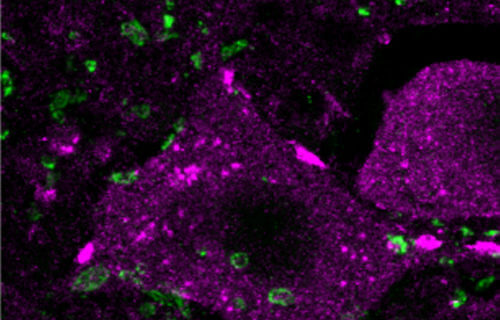LONDON — A revolutionary injection that could repair spinal cord injuries has been developed by scientists. The most common type of spinal injections are epidural steroid injections, but those are only meant to reduce inflammation and pain.
According to a new study, paralyzed mice regrew nerves within three months following weekly injections of the drug TTK21.
“This work shows that a drug called TTK21 that is administered systemically once/week after a chronic spinal cord injury (SCI) in animals can promote neuronal regrowth and an increase in synapses that are needed for neuronal transmission. This is important because chronic spinal cord injury is a condition without a cure where neuronal regrowth and repair fail,” says lead author Dr. Simone Di Giovanni of Imperial College London in a media release.
Damage to the spinal cord interrupts the constant stream of electrical signals from the brain to the body. It can lead to paralysis in the limbs below an injury. The medication triggers cells to regenerate. Long spindly parts of the severed nerves – called axons – regenerated thanks to the new treatment.
Currently, there are no effective treatments for spinal cord injuries. Physical rehabilitation can help patients regain some mobility. However, for severe cases, the outcomes are extremely limited by the failure of spinal neurons to regenerate naturally.
New nerves regrow within 3 months of treatment
The study published in the journal PLOS Biology showed TTK21 aided the regrowth of sensory and motor neurons when given to mice 12 weeks after severe injury.
The drug belongs to a group of therapies known as epigenetic activators which target damaged DNA. Building on past success, the researchers used it to switch on genes that induced axon regeneration in neurons.
In experiments, lab rodents with severe spinal cord injury lived in an enriched environment that gave them opportunities to be physically active, which doctors encourage for human patients as well.
Treatment lasted for 10 weeks. Study authors identified several improvements, the most noticeable being the sprouting of more axons in the spinal cord.
Retraction of motor axons above the point of injury also stopped, and sensory axon growth increased. These changes were likely due to the observed increase in gene expression related to regeneration, according to Dr. Di Giovanni.
The next step will be to boost the effects even more and get regenerating axons to reconnect to the rest of the nervous system so animals can regain their ability to move with ease.
“We are now exploring the combination of this drug with strategies that bridge the spinal cord gap such as biomaterials as possible avenues to improve disability in SCI patients,” Dr. Di Giovanni adds.
For decades, this has remained a major challenge. Our body’s central nervous system, which includes the brain and spinal cord, does not have any significant capacity to repair itself.
Life expectancy after spinal cord injury has not improved since the 1980s. Today, these injuries affect nearly 300,000 people in the U.S. Life for these patients can be extraordinarily difficult.
Fewer than three percent ever recover basic physical functions. A third are re-hospitalized at least once a year.
South West News Service writer Mark Waghorn contributed to this report.

Those who are involved in this research, we are really appreciated, for all the work you put into it, I have a spinal cord injury in 2011 with C3, 4 complete, I hope this will be available before I left this world, my main dream is to, hopefully I can use my hand again will give me a lot more independent, fingers cross, cheers.
Se efettivamente funziona ,quanto tempo bisgna attendere per la sperimentazone sugli umani?